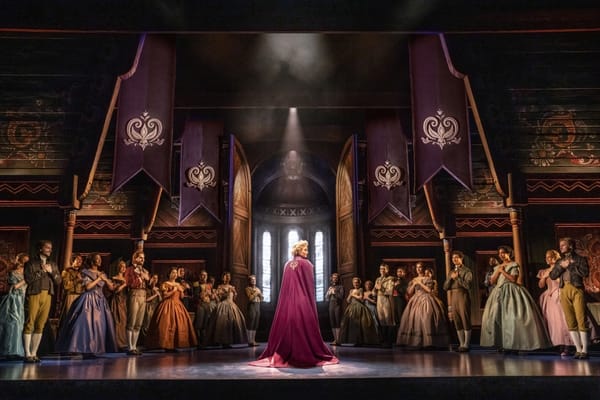Arts & crafts for grown-ups
Arts Writer Ioana Esanu accepts an invitation from Yoko Ono to mend the world

Yoko Ono's MEND PIECE for London
★★★
- What: Exhibition
- Where: Whitechapel Gallery
- When: Until 2nd January, 2022
- Cost: Free (booking required)
As you enter Whitechapel Gallery, a sense of calm washes over you – it’s small, intimate. Exactly the place you would like to spend a relaxing afternoon in. Only Yoko Ono’s MEND PIECE doesn’t quite live up to the task.
The exhibition is organised in the hallway of the first floor, awkwardly nestled between two actual gallery rooms. Visitors are instructed to take a seat at one of the tables and:
Mend carefully. Think of mending the world at the same time.
On the pristine white tabletop, various objects jostle for space: broken fragments of ceramic cups and plates, scissors, tape, glue, and twine. The setting seems oddly clinical, not least because you constantly feel like you are being watched. A gallery employee tasked with ensuring safe handling of the materials stands ominously at the edge of the room. Visitors passing through the hallway glance thoughtfully at the exhibit: ‘Is this some sort of performative art piece? Are we meant to watch you mend these objects?’. Not quite.

The experience improves after more people join the table. Although nobody speaks, there is a mutual understanding that this is a time for meditation. The ceramic fragments don’t seem to fit together, as visitors soon discover the purpose is not to reconstruct a coffee cup, but rather to reinvent, to make art. I found myself absolutely absorbed by the piece of twine my fingers were mindlessly wrapping around a cup handle. At first a simple (if not childish) concept, MEND PIECE becomes mesmerising, profound, an escape from daily life and a chance to just ‘be’ — even for only half an hour.
Ono wants you to think of mending the world, but at best you get a brief chance to mend yourself — your tired brain, or perhaps your broken heart...
Yoko Ono’s piece is inspired by the Japanese art of kintsugi: repairing broken pottery with a mix of lacquer and precious metals such as silver or gold. Philosophically, it views breakages and repairs as part of an object’s history. Scars are not defects; they carry meaning and tell a story. Beautiful as this message may be, I believe MEND PIECE does a mediocre job of expressing it. The mended objects displayed on shelves in the same hallway are less “broken plate turned into art”, more “ceramic clutter tied with string”. Ono wants you to think of mending the world, but at best you get a brief chance to mend yourself — your tired brain, or perhaps your broken heart. And hey, it’s cheaper than therapy.









